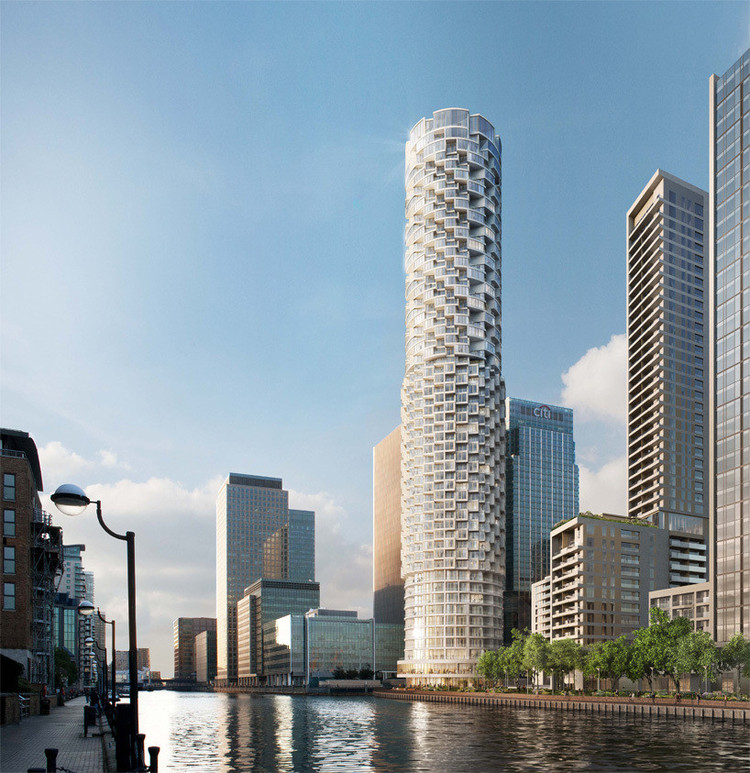
The RIBA annually bestows the Jencks Award to an outstanding architect or practice "that has made a recent significant, simultaneous contribution to the theory and practice of architecture." This year the honors go to Herzog & de Meuron.
Selected by a panel of judges chaired by David Gloster (RIBA Director of Education) and which included Charles Jencks, Stephen Hodder (RIBA President and Chairman of Hodder and Partners), Julia Peyton-Jones (Director of the Serpentine Galleries) and Brett Steele (Director of the Architectural Association School of Architecture), Herzog & de Meuron will receive the award on Thursday 29 October at the RIBA in London. In addition, the Swiss architects will receive an honorarium of £1,000 and a certificate.
Herzog & de Meuron have already received The Pritzker Architecture Prize (2001), an RIBA Royal Gold Medal (2007), a Praemium Imperiale (2007) and the Mies Crown Hall Americas Prize (MCHAP) (2014).
Read on to see the judges statements.
On this year’s winners, RIBA President Stephen Hodder said:
“The contribution to our profession from Jacques and Pierre is constantly profound. The innovative ways in which they explore and reinterpret is evident in their numerous projects, from the 2003 Stirling Prize winner Laban Centre in London to the multi-layered intersection of architecture, archaeology and art that was the 2012 Serpentine Pavilion. In a remarkable career that has included notable projects such as the acclaimed spaces of the Tate Modern and the 2009 Lubetkin Prize winner National Stadium in Beijing, they have garnered public recognition and acclaim by their peers in the form of prestigious awards such as the 2001 Pritzker Prize and 2007 Royal Gold Medal.
“For the past four decades, Herzog & de Meuron’s work has revealed a constant ability to innovate and apply unique interpretations of architectural theory into practice that make them the unquestionable winners of this year’s RIBA Jencks Award.”

Commenting on Herzog & de Meuron receiving the award, Charles Jencks said:
“Herzog & de Meuron have the widest approach to architecture varying their style for each job. In this sense they epitomise the global search for an architecture of pluralism, one flexible enough for very different cultures. While a recognisable attitude runs through the work, and a commitment to intelligent design, it is the creative flexibility which stands out above other practices today. The high quality of the work is as notable as the wit; the amount of production as much as its personality.
“This is due partly to their working methods, of dividing a large office of more than 400 into small, highly motivated design teams and creating the collegial atmosphere of a research institute. Their conceptual innovations combined with high turnover are highly risky, yet they have continued to produce architecture of the highest standard: rigorous and iconic, and plain or ornamented depending on the task at hand.
“Their small medical work REHAB is exemplary; the open-access Schaulager Museum is interesting and provocative, and the VitraHaus is funny, mordant, and to the point. Herzog & de Meuron deserve a lifetime award as a local Basel office and a global practice. They seem to have finally squared the circle of large-scale architectural production.”
On winning the 2015 RIBA Jencks Award, Jacques Herzog and Pierre de Meuron said:
“We are delighted to be the winners of this year’s RIBA Jencks Award. We feel especially happy about that prize since it honours theory as well as practice. Despite the many texts and books we have published, we still have doubts about the longevity of texts written by architects. The title of a few books may be remembered over time - the relevance of their content, though, ages faster than expected... We therefore always did our best to not to separate theory from the built work. Buildings don't follow theory but yes: the best buildings always allow for theoretical interpretations of all kinds.”

